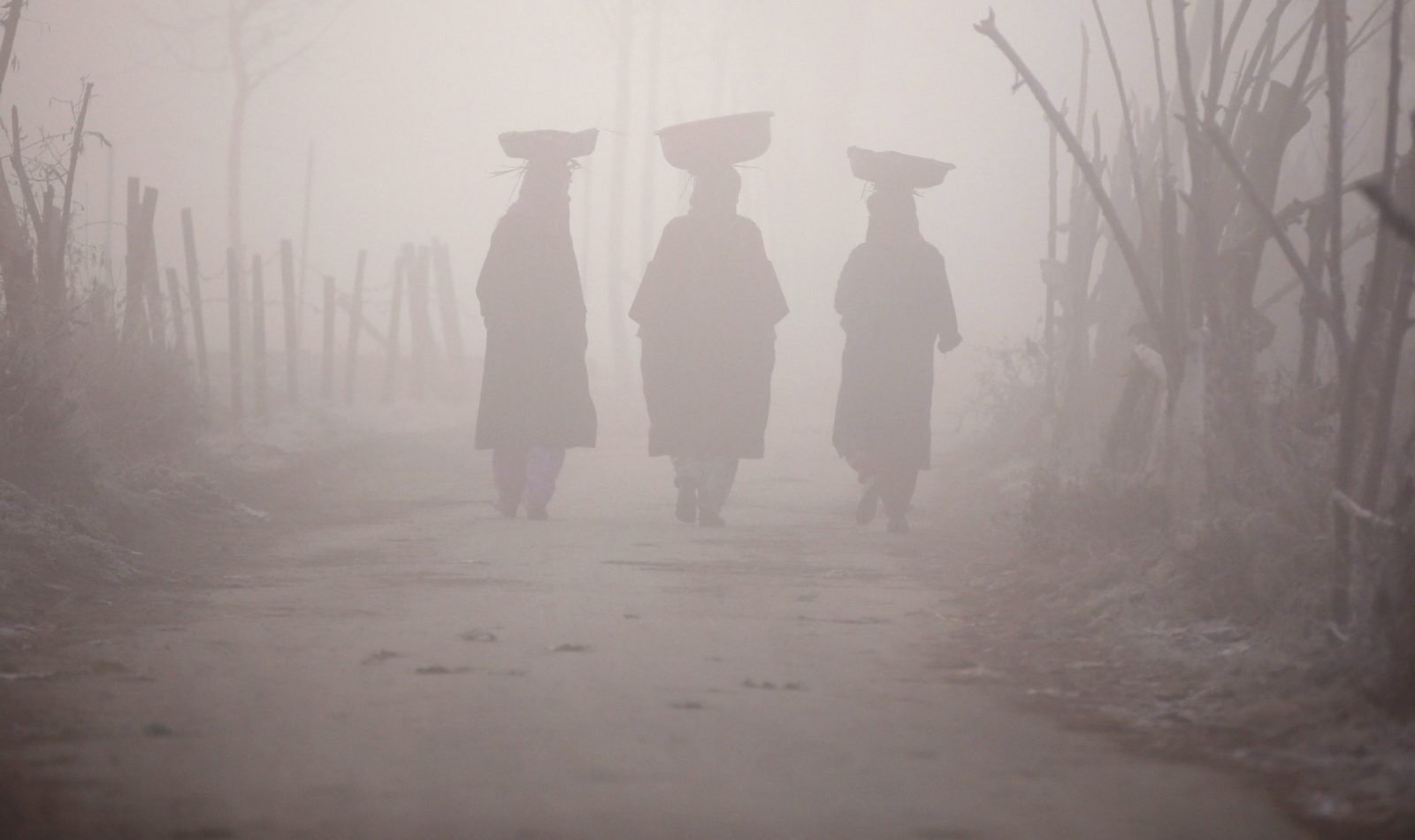
Kashmiri women carry baskets on their heads as they walk along a road on a hazy morning in Srinagar, November 30, 2015. Photo: Reuters/Danish Ismail
- Climate adaptation refers to changes that we can make to help us adjust better to the inevitable consequences of climate change.
- Its strategies are highly case- and context-specific, and can include migration and the installation of early-warning systems.
- Taking adaptive action now is the need of the hour, as the effects of climate change continue to worsen.
Kochi: ‘Climate adaptation’ is a phrase you must have come across numerous times over the last few years.
You’ll stumble across the term several times this week too. It’s repeatedly mentioned in the latest climate science report of the Intergovernmental Panel on Climate Change (IPCC), which talks about the consequences of climate change on the world, and what we should do to adapt to it.
But what is climate adaptation? And why do we need it?
What and why
The world as we know it is changing. It’s warming up. Glaciers are melting in the high mountains of the world. Sea levels are rising and people living in small islands and coastal areas are bearing the brunt. Some parts of the globe are seeing intense rains and floods, while others face unusual, repeated droughts and cyclones. Some regions are witnessing more wildfires.
Numerous species across the world, such as the charismatic polar bear, are facing habitat loss due to these climatic changes. Many species are inching closer to extinction. Some, in fact, are already extinct. The bramble cay melomys, a small rodent in Australia, just went extinct in 2016 due to climate change.
Human activities are to blame for all these changes. We’re burning more fossil fuels now to meet growing consumption levels. This releases more carbon dioxide, a greenhouse gas that causes global warming, into the atmosphere.
Natural ecosystems – forests, grasslands and wetlands – should be able to sequester some of this extra carbon from the atmosphere into their vegetation and soil. But human actions are preventing that too. We’re chopping down forests, degrading our grasslands and building concrete jungles on our wetlands. The world is not well: and we are the reason why.
Despite efforts (which have not been enough) to cut down on carbon emissions, escaping human-induced climate change is now inevitable.
How do we adapt?
The only way out? Adapt.
Adapting, of course, won’t undo the damage that’s already been done. The latest IPCC report which urgently calls for adaptation, for instance, is categorical in saying that some of the damage we have caused is “irreversible”. But some moves we now make can help us adjust to the inevitable consequences – both ongoing and future – of climate change better.
There are many ways to do that. And that is what climate adaptation is about.
According to the UN Framework Convention on Climate Change, climate adaptation refers to “adjustments in ecological, social, or economic systems in response to actual or expected climatic stimuli and their effects or impacts”. These can include changes in “processes, practices, and structures” that can help us prepare for ongoing and future impacts better.
Setting up early warning systems to warn us of potential changes in the weather – such as intense spells of rainfall such as the one Chennai recently witnessed, or the rapid onset of cyclones – is one of them. Such systems can help us better prepare for these eventualities through targeted evacuations, or other means of disaster management.
Hotter climes also mean that working outside will become more difficult. Effective adaptation strategies include moving work-hours from the middle of the day to early in the day, and keeping workers hydrated. Such adaptive measures will become even more important as climate change intensifies. And that’s definitely on the cards.
As per the latest IPCC report, South Asia will be among the regions most affected by heat stress. The number of “climatically stressful” work days that outdoor workers will have to see will increase to 250 per year by the end of the century.
Other adaptive strategies include migrations (due to floods, for example) or developing climate-sensitive infrastructure. Climate adaptation strategies are highly case- and context-specific. They can look different for different countries, regions, communities, even cities. Something that works for Bengaluru may not work for Chennai. Climate-sensitive infrastructure in Chennai will need to be mindful of its vulnerability to cyclones, for example.
Adaptation differs from mitigation. The latter refers to actions that can decrease the impacts of climate change, such as having stricter policies to decrease carbon emissions.
However, adaptation and mitigation strategies can be fused to develop climate resilience. These include actions that can bring us closer to sustainable development, something that most governments across the world are targeting as per their ‘nationally determined contributions’ under the Paris Agreement.
For instance, developing green infrastructure in cities is an example of cultivating climate resilience and takes us closer to Sustainable Development Goal 11 (developing sustainable cities and communities).
Developing and implementing both adaptive and climate-resilient actions are the need of the hour, as the latest IPCC report reiterates. It’s something we shouldn’t drag our feet on anymore: better late than never is unlikely to work in this case, given the levels of climate change the world is witnessing, and will continue to witness.

